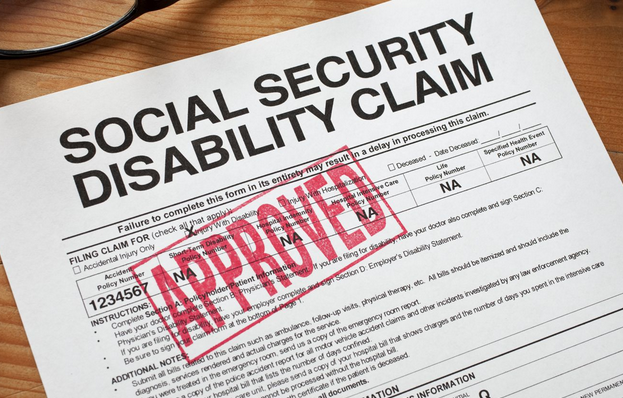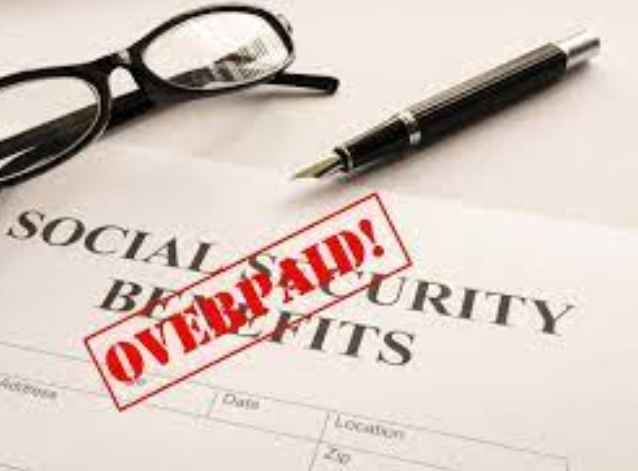What is a Social Security Overpayment (and How Can You Fix It?)

What Is the Social Security Administration?
The Social Security Administration (SSA) is an independent government agency that administers social security. It is an insurance program that consists of retirement, disability and survivor benefits. In order to qualify for these benefits most workers pay into the system through social security taxes.
The head offices of the social security agency are located in Woodlawn, Maryland and are referred to as the Central Office. There are tens of thousands of workers employed by the social security agency and it is the largest government program in the United States.
It is estimated that by the end of the 2022 fiscal year the agency will have paid out $1.2 trillion in benefits to 66 million citizens and legal residents of the United States. An additional $61 billion is expected in SSI benefits and $7.5 million to low-income individuals.
This government agency is a vital part of the country's economy and without it millions of already struggling Americans would have nothing. It is a program that many have paid into for decades in preparation for retirement and as an insurance policy against sudden disability.
History of the Social Security Agency
On August 14th 1935, President Franklin D. Roosevelt signed the Social Security Act into law as part of his New Deal initiative. This led to the creation of the Social Security Board (SSB), a presidentially appointed group of three executives tasked with overseeing the social security program.
With zero budget, staff or even furniture the SSB finally obtained funding from the Federal Emergency Relief Administration. It was on October 14th 1936 that the first social security office opened its doors in Austin, Texas.
In January of 1937 social security taxes were first collected. Just a few years later the first social security check was issued to Ida Mary Fuller of Battleboro, Vermont. Ida’s check was dated January 31st 1940 and she received $22.54.

The SSB in 1939 merged with the U.S. Public Health Service, the Civilian Conservation Corp and other government agencies to become the Federal Security Agency. In 1846 under President Harry S. Truman the SSB was named the Social Security Administration SSA.
In 1953 the Federal Security Agency was dismantled and the SSA was placed under the banner of the Department of Health, Education and Welfare. Finally in 1994 President Bill Clinton made the Social Security Administration an independent body once again.
How Is Social Security Disability Insurance (SSDI) Calculated?
A very important aspect of social security is the SSDI program which covers individuals who have become disabled and are no longer able to earn a gainful living due to their challenges. The amount of benefits that a person might be eligible for are not dependent upon the type of disability but are instead based on the previous earnings and tax contributions made by the individual.

This is not like retirement but in terms of calculation it does have a similar process to determine how much a person may be eligible for. The time frame of income that SSDI takes into account when calculating a potential SSDI payment depends upon at what age a person becomes disabled.
Essentially the Social Security Administration counts up the years between when the applicant turned 22 to the first full year prior to them becoming unable to work. They then drop out between one to five years depending on how long that work history is. The final number of years are then considered the highest earning years for the individual and are taken into account for determining the SSDI payment amount.
How Is Retirement Social Security Calculated?
Generally speaking a person must amass 40 credits to apply for a full pension upon retirement and on average this may take up to 10 years of taxed income. In terms of determining the amount the highest 35 years of a person's income are used to calculate this. As an example if a person made more in the first 35 years of employment than their last 5 years then it would be the higher earning years that are factored not the last 5.
Qualifying for SSI
The SSI program was created essentially to help all those who would not qualify for the Social Security Disability Insurance scheme. This means that generally speaking it is far easier to qualify for SSI payments.
Those with qualifying disabilities and or their carers who can prove they are on a low income may well be eligible for this program. Unlike SSDI you do not need a significant work history and to have paid significantly into Social Security tax.

To qualify for SSDI the individual would have to have at least ten years of taxable income to be eligible for disability insurance payments. Those looking to qualify for SSI need no such work record. They simply need to be unable to work due to disability and fall within the federal poverty guidelines.
You do have to prove your low income status as this is a program that has been abused in the past. You might still get SSI even if you earn over the income requirements as the difference will be subtracted from the payment you receive.
All applications are taken on a case by case basis so there is no guarantee you will be accepted for this benefit. The only way to be sure is to make an application and submit all the relevant documents to prove your case.
What Is Social Security Overpayment?
So now we come to what we mean by social security overpayment, what exactly does this mean? Well the term is actually quite self explanatory because a social security overpayment is literally receiving more money for a month than the amount that should have been paid.
As an example if you were due $913 but instead received $1,013 then you have a social security overpayment of $100.
What Can Cause Overpayments?
- There are a number of things that cause an overpayment which may include:
- The beneficiary’s income was higher than estimated when they applied
- There was a change in the beneficiary's living situation
- There was a change in beneficiary's marital status
- Beneficiary may have more resources than the allowable limits
- A status of being disabled has changed so benefits are no longer required
- There was a failure by the beneficiary to report significant changes which would effect the payment amount
- Incorrect information on a application leads to incorrect calculation of benefits
How Are You Notified of an Overpayment?
The social security administration is meticulous and strict when they discover mistakes that lead to overpayment so they will swiftly notify beneficiaries by mail of any overpayment they deem has occurred.
There will be a notice that the funds will need to be returned within 30 days. If you are still receiving benefits your amount will be adjusted and if you do not make a refund to the SSA further steps may include:
- A proposal to withhold either the lesser of 10% or the entire monthly payment to recoup the overpayment
- Inform the beneficiary when withholding may begin
- Explain all the rights of appeal should beneficiary disagree that they were overpaid
- Explain that a review is possible to overturn the need for withholdings
- What to Do If You Think the Overpayment was Not Your Fault
The Social Security Administration is not completely heartless; they are willing to listen if you feel that although you were overpaid you don’t believe it was your fault. You can request a waiver of the overpayment by filing a form SSA 632 (Request for Waiver of Overpayment Recovery).

You must be able to show that the overpayment was through no fault of your own and that you are not financially able to payback the funds without causing you to be unable to meet your ordinary living expenses.
What Should You Do if You Suspect Overpayment?
The temptation to not look a gift horse in the mouth is understandable especially for those already struggling to get by. Receiving a larger payment than you expected may seem like a gift but if it is an overpayment the SSA will eventually realize and they will want this money back.
As wrenching as it might be, the smart thing to do is first of all not spend any of the overpayment and then immediately inform social security of the possible mistake. If you are wrong and the payment amount was correct that is great but if you are in doubt the risk you take by claiming ignorance can really cause you issues later.
Final Thoughts
If an overpayment occurs because you failed to notify social security of a major change in a timely manner this can be a costly mistake even if it was not intentional. Although social security can sometimes be forgiving if you can prove it was not your mistake and you can not afford to pay back the funds, they may also demand their money back and withhold it from future benefits.
Make sure you fill out applications correctly, report changes in your status that would affect your payments and if you think you were overpaid report it. Most important is that if you think you were overpaid do not spend a penny of it until you know if this is the case.
Reference SSA Locator
If you use any of the forms, definitions, or data shown on SSA Locator, please make sure to link or reference us using the tool below. Thanks!
-
<a href="https://ssalocator.com/blog/what-is-a-social-security-overpayment-and-how-can-you-fix-it/">What is a Social Security Overpayment (and How Can You Fix It?)</a>
-
"What is a Social Security Overpayment (and How Can You Fix It?)". SSA Locator. Accessed on October 22, 2024. https://ssalocator.com/blog/what-is-a-social-security-overpayment-and-how-can-you-fix-it/.
-
"What is a Social Security Overpayment (and How Can You Fix It?)". SSA Locator, https://ssalocator.com/blog/what-is-a-social-security-overpayment-and-how-can-you-fix-it/. Accessed 22 October, 2024
-
What is a Social Security Overpayment (and How Can You Fix It?). SSA Locator. Retrieved from https://ssalocator.com/blog/what-is-a-social-security-overpayment-and-how-can-you-fix-it/.